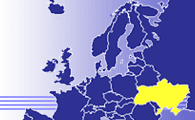European Commission and State Space Agency of Ukraine establish a partnership on Earth Observation by signinga Copernicus Cooperation Arrangement
May 30, 2018.
As part of the European Neighbourhood Policy and Eastern Partnership, and to allow the benefits of its Copernicus Earth Observation and Monitoring programme to extend beyond EU borders, on 25 May the European Commission has signed a Cooperation Arrangement with the State Space Agency of Ukraine
The Copernicus programme, the world’s most ambitious and successful Earth observation programme, delivers benefits in a wide range of applications, e.g. land, marine and atmosphere monitoring as well as support in the forecasting, management and mitigation of natural disasters. Its full, free and open data policy has proven its merits by allowing the development of a thriving user base in Europe and beyond.
The European Commission and the State Space Agency of Ukraine aim to develop cooperative activities to strengthen and stimulate cooperation on Earth observation data, applications and services to foster an active downstream sector. They support a free, full and open access for end users to Copernicus Sentinel satellite data and information. Under this Cooperation Arrangement, the State Space Agency of Ukraine intends to provide the Copernicus programme with a free, full and open access to data from its Earth observation satellites.
Considering the importance of in situ observations, which are complementary to space-based observations, the State Space Agency of Ukraine intends to facilitate access to data from regional observatory networks for the Copernicus programme, including geophysical and meteorological networks. Both sides also aim to improve cooperative activities to strengthen and stimulate cooperation on Earth observation data between the agencies entrusted with the operations of the Sentinel satellites, ESA and EUMETSAT, and the Ukraine Earth observation satellite programmes.
Under the Cooperation Arrangement, the Ukrainian National Space Facilities Control and Test Centre will co-ordinate and promote the use of information and data provided by the Copernicus programme with various Ukrainian institutions in the public sectors and with academia and private enterprises. Both sides intend to encourage cooperation on data processing for common use in areas, such as long-term management of natural resources, monitoring of marine and coastal areas, water resource management, impacts of climate variability and climate change adaptation, disaster risk reduction, food security and rural development as well as health management issues.
Ukrainian citizens, academics, researchers and private sector will be provided with full, free and open access to the data from the family of Copernicus Sentinel satellites using high bandwidth connections from data hub to data hub.
Each side will fund their own activities and adhere to the principle of ‘no exchange of funds’ in respect to this Cooperation Arrangement.
The Cooperation Arrangement has been signed in Brussels on 25 May by Philippe Brunet, Director for Space Policy, Copernicus and Defence, on behalf of the European Commission and by Pavlo Degtiarenko, Chairman of State Space Agency of Ukraine.
Background
Copernicus, is the world’s most ambitious and successful Earth observation programme. It already helps save lives at sea, or during the response to natural disasters such as earthquakes, forest fires or floods, and allows farmers to better manage their crops, or to decision makers to better understand and mitigate Climate Change. It collects data from Earth observation satellites and ground stations, airborne and sea-borne sensors.
The benefits and full, free and open data policy of the Copernicus programme extend globally.
Copernicus processes data and provides users with reliable and up-to-date information through a set of services in six thematic areas: land monitoring, marine monitoring, atmosphere monitoring, climate change, emergency management response and security.
These services are operational and are enabled by the Earth observation data from the seven Copernicus Sentinel satellites currently in orbit, as well as a number of contribution missions from other operators.
|




